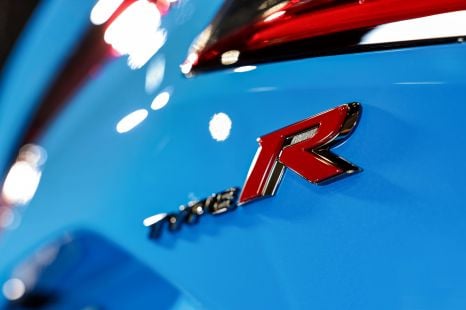

Damion Smy
Honda Prelude Type R ruled out... for now
27 Minutes Ago
The Peugeot 308 hatchback range scores a new plug-in hybrid option, but the cost increase will rule it out for many buyers.
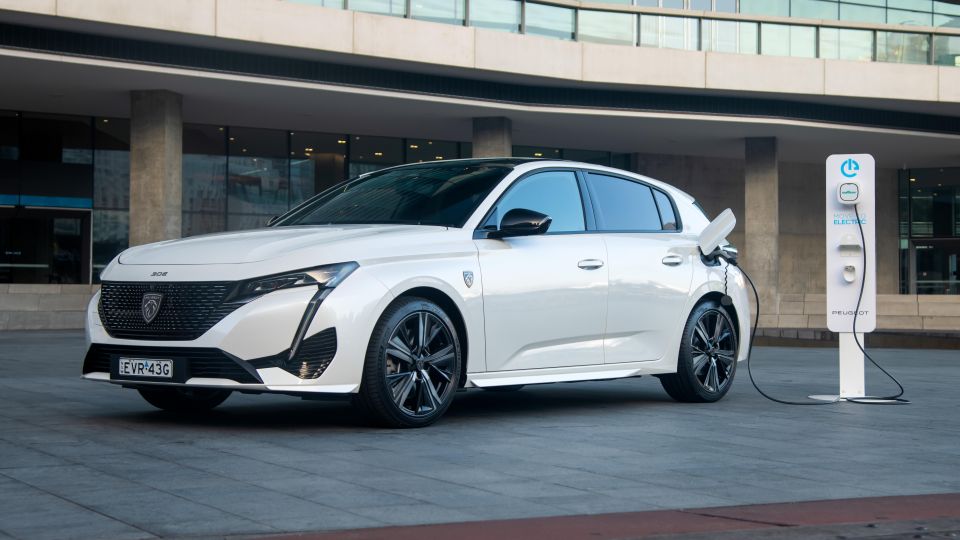
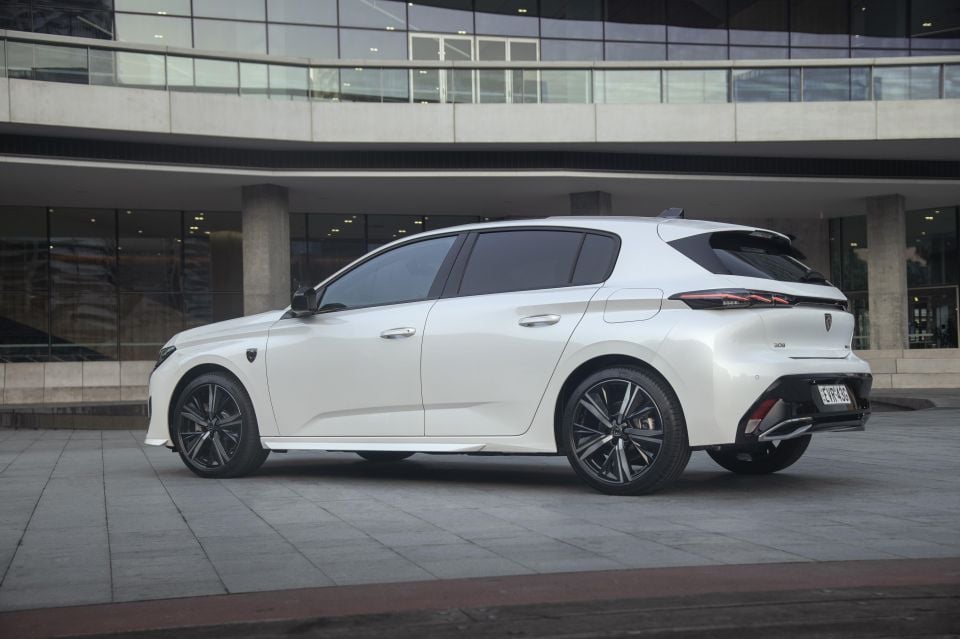

Quickly see how this car stacks up against its competition. Select any benchmark to see more details.
Where expert car reviews meet expert car buying – CarExpert gives you trusted advice, personalised service and real savings on your next new car.
Peugeot may not be the first brand that comes to mind when you think of new-energy vehicles, but the French maker is pushing hard to offer more options for Australian customers who are ready to jump to something more eco-conscious.

As such, the new Peugeot 308 GT Sport Hatch Plug-in Hybrid is the first PHEV version of the brand’s small car to be sold here, and it promises plenty for those who aren’t ready to dip their toes in the EV pool.
It has a turbo-petrol engine teamed to a battery pack and electric motor, and almost 60 kilometres of EV driving range is possible, according to the brand.
Whether it’s possible or not is another thing entirely.
The test vehicle used in this review did not want to play ball when I attempted to drive in EV mode. The car was fully charged, it wasn’t freezing cold outside (pleasant, actually, at 23 degrees Celsius), and I even deactivated air-conditioning multiple times to try and get it to work. No dice.

Over four days, it allowed me to select and drive in electric mode ONCE.
That considerable concern for a PHEV aside, the step up from the petrol model puts it at a price that will leave you questioning whether it’s worth the increase. Considering there are full-EV vehicles on the market for less, it is a big ask.
You’re going to have to part with $64,990 before on-road costs to park a Peugeot 308 GT Sport Plug-in Hybrid in your driveway.
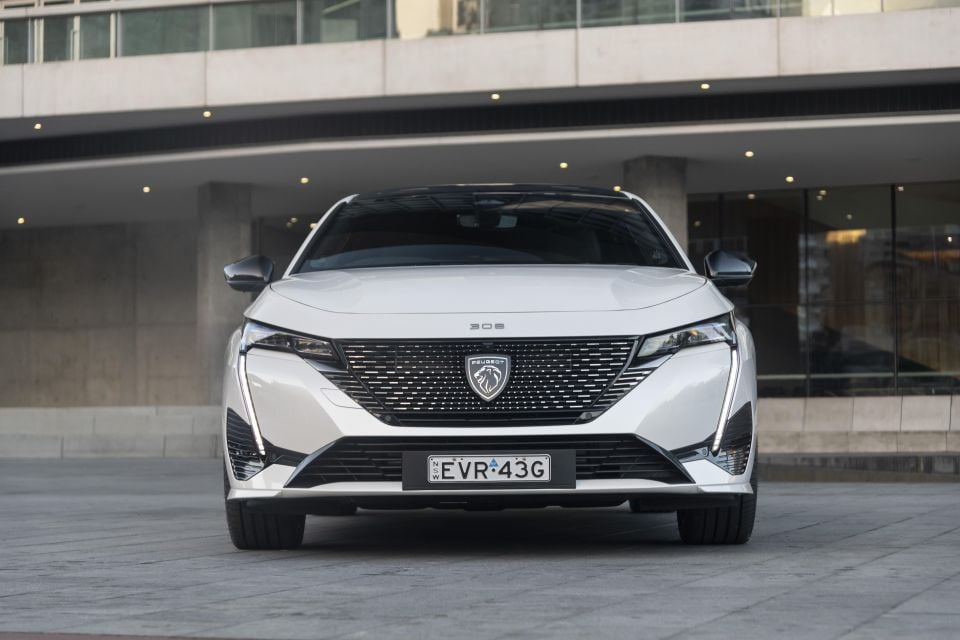
If that seems like a lot of money, that’s because it is. Peugeot has slapped a $16,000 premium on this part-EV model compared to the next highest-spec 308 Hatch, and that seems like an excessive amount of extra cash for the opportunity to be able to drive on electricity for up to 60km at a time based on WLTP testing.
And at $21,000 more than the base 308 GT Hatch, it really needs you to want the car very, very badly to justify the expense. Admittedly, this one gets a whole heap more grunt as well as that enviro-conscious mindset. More detail below.
Look, Peugeot isn’t \alone when it comes to asking a lot extra for a PHEV. Cupra has the Leon VZe PHEV listed at $59,990 plus on-roads, which represents a sizeable jump over either $8000 over the equivalent VZ. It too has a decent EV driving range of 50km.
The only other PHEV in this segment is the Mercedes A250e at around $70,000 – it is front-wheel drive and attracts only a $3000 price increase over the equivalent A250 4Matic Hatch. While hardly a like-for-like option, the Peugeot makes a Toyota Corolla Hatch ZR Hybrid look like the fuel-saving bargain of the century, at $38,120 plus on-roads.
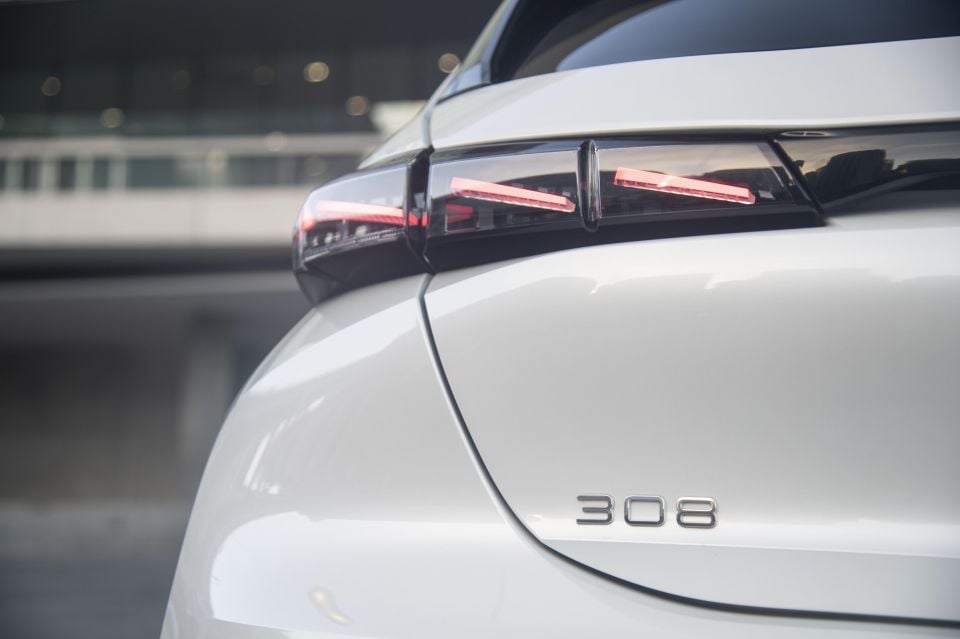
2023 Peugeot 308 pricing:
Prices exclude on-road costs
Buy your new car without the stress. It's fast, simple and completely free.

Great service from Travis and team, second time I have used this business would not hesitate to recommend them to anyone
Craig C.
Purchased a Ford Ranger in Sunshine Coast, QLD
CarExpert helped Craig save thousands on his Ford Ranger, now let us save you on your next new car.
Find a dealIt’s much like any other Peugeot 308 inside, and that means you will either be okay with the cabin design and the steering wheel position, or you’ll hate it.
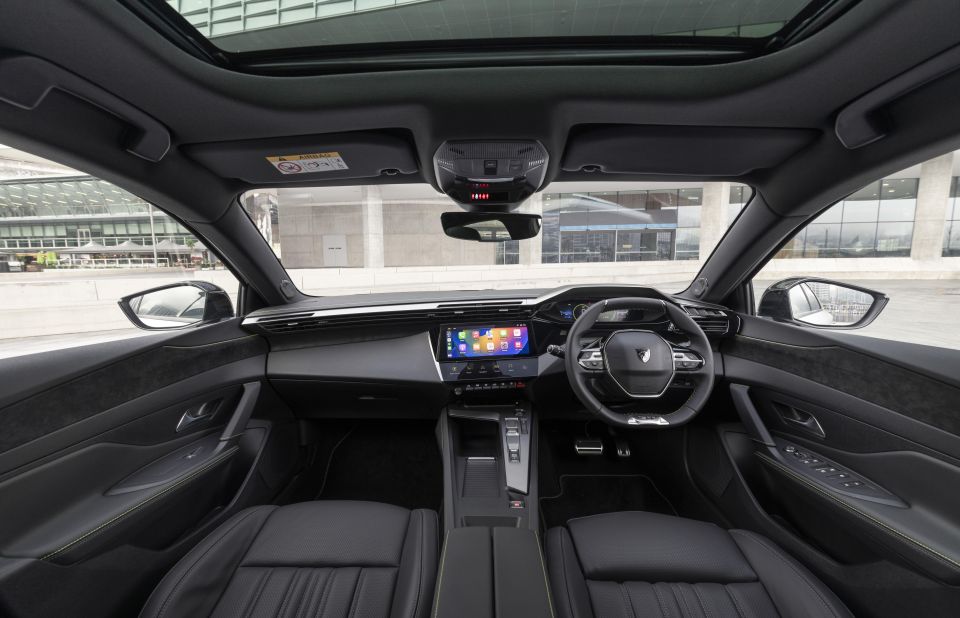
I fall into the “this is kinda cool” school of thought when it comes to the Peugeot i-Cockpit, but I know plenty of people who cannot stand the idea of sitting with the steering wheel low in their lap.
Maybe it’s a Falcon flashback, but really, if you can get to grips with the idea of looking over the steering wheel, rather than through it, you might find it’s fine.
That means you’ll be glancing at the 10-inch driver info screen, which in the PHEV has a diagram showing you whether the car is running in EV or petrol modes, both, or recharging the battery. There’s a digital speedo and fuel use readout, too. The buttons to control it require some consultation with the owner’s manual.
There are some other ergonomic considerations for this car, including the new media screen(s). There’s a large 10-inch touchscreen above a second smaller horizontal screen, which Peugeot calls “i-Toggles”.
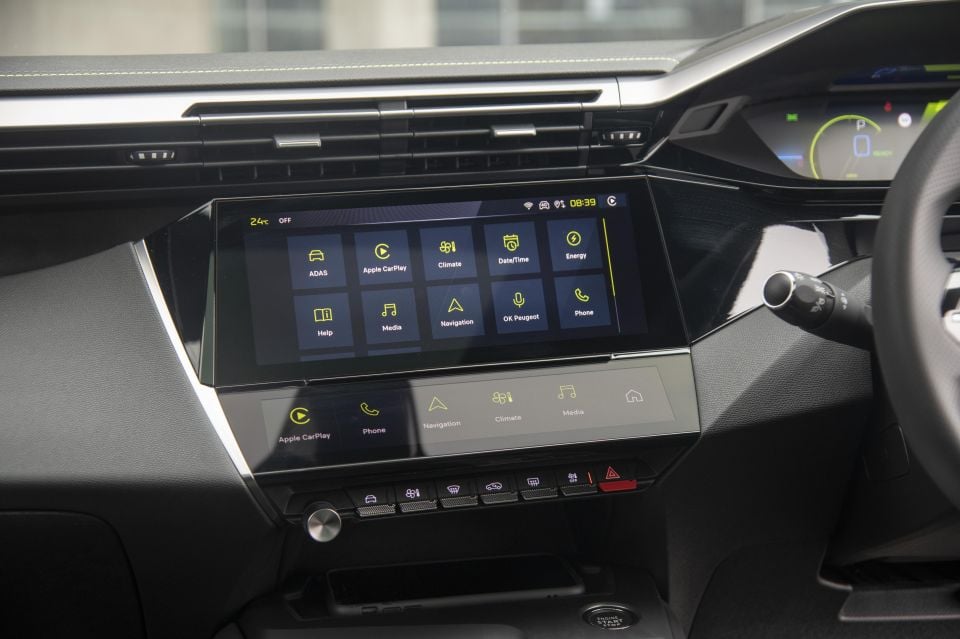
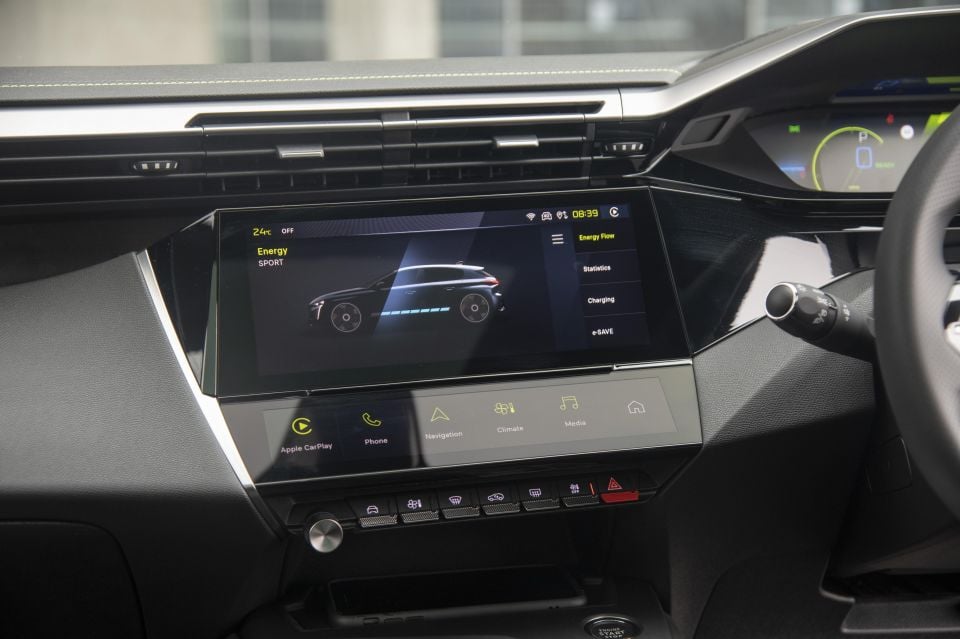
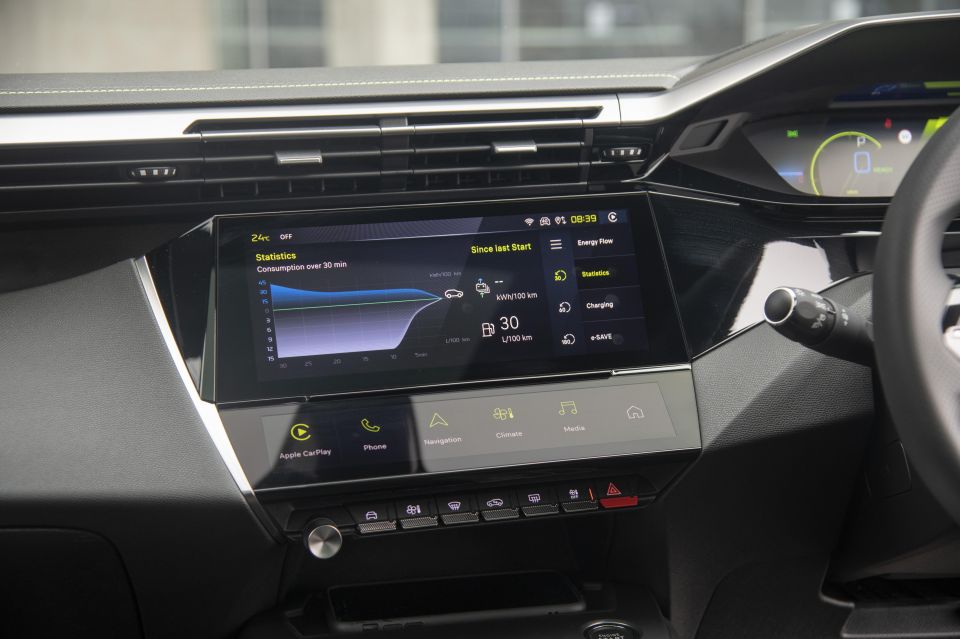
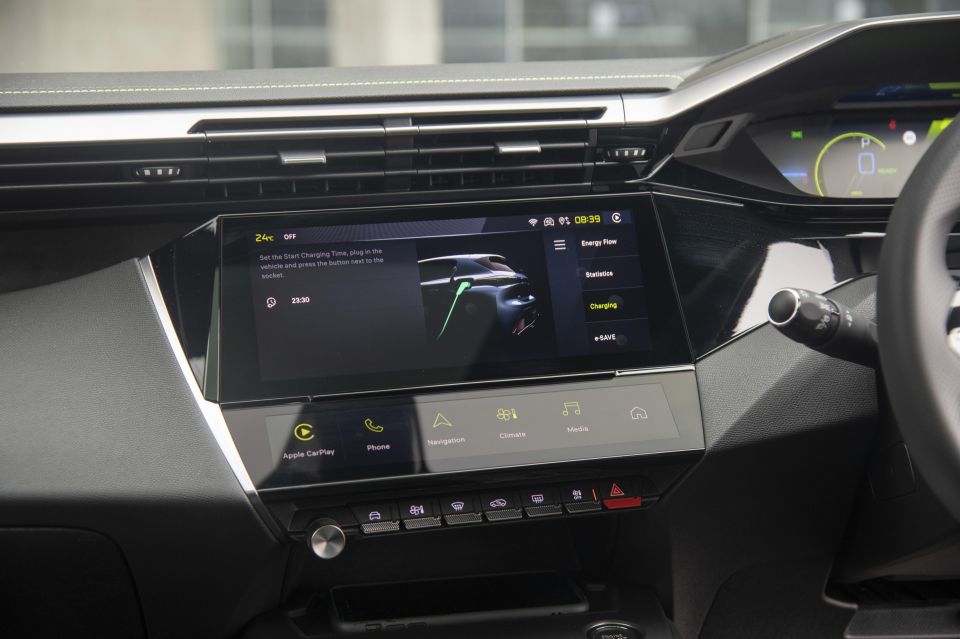
That section is basically five buttons on a small touchscreen that make it quicker and easier to interact with the car’s various digital menus.
It is an improvement on the last-generation model, and even as a counterpoint to the likes of the 3008 and 5008, it’s a nice touch.
There’s still a row of hard buttons below and a volume knob too, though you still have to go through the main screen to adjust fan speed and temperature, not to mention things like the heated seats and massage functions.
The controls take some learning, but you can get to terms with them after just a few minutes. And I still like those hard keys that clearly take inspiration from Lamborghini.
The storage on offer is decent – there are cup holders that actually fit a take-away coffee (a rarity for a French car), while there is also a decent centre storage area under the wireless charging bay.
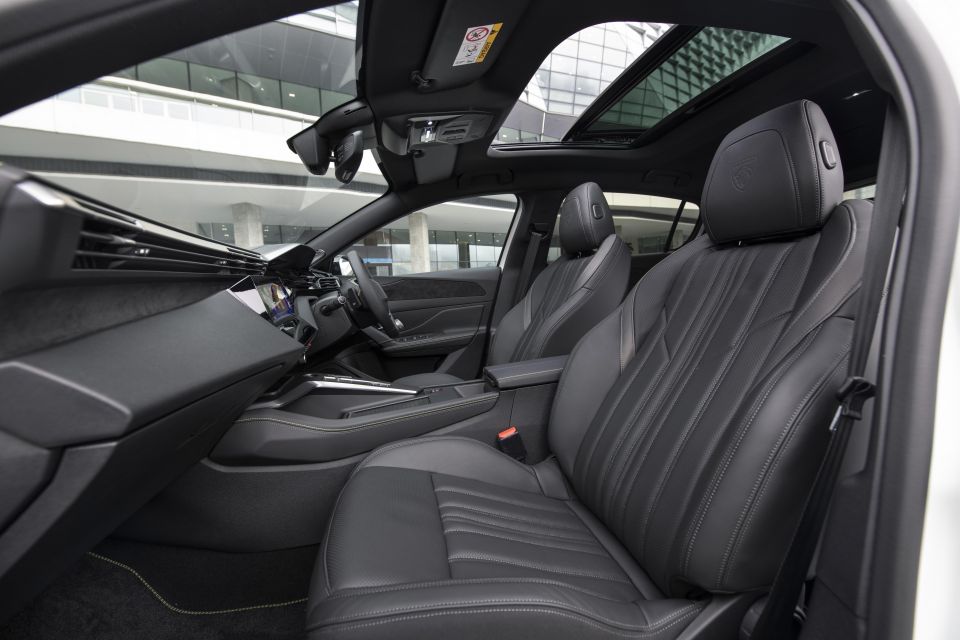
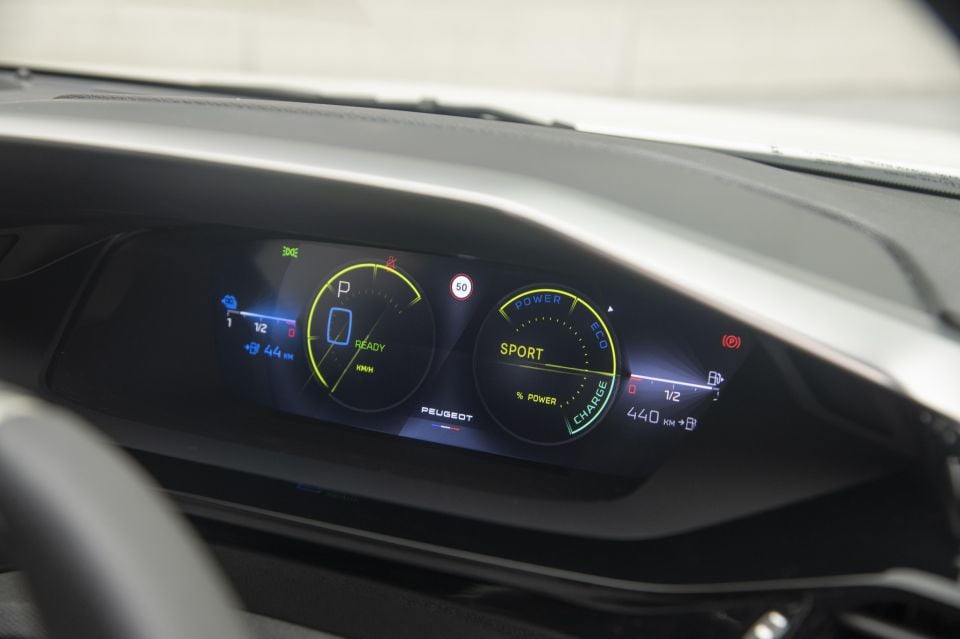
I had issues with that Qi charger, though – my phone was constantly sliding off the hot-spot. Maybe it was my case, but I’m fairly sure lots of smartphone users will have a similar issue.
The front centre console bin is small, but houses a USB-C port, and there’s another up near the charging zone. Front doors have decent sized pockets with sculpted cup holders, too.
The rear seat experience isn’t tremendous. I’m 182cm/6’0 and I was pretty cramped in there behind my own driving position.
There’s limited headroom (and it can be an issue getting in and out, whether you’re in the front or the back seat), and my knees were almost hard-up against the hard plastic backing of the front seats. Smaller occupants mightn’t mind it, but bigger bods will struggle.

There’s a pair of ISOFIX child-seat anchors (hidden behind zippers, which is a nice touch) and three top-tether points, and you will only just be able to fit a rearward-facing capsule in if you plan to have someone larger in the front passenger seat. My daughter’s forward-facing seat fit in fine, but passenger space was still a bit tight in front of it.
There’s no fold-down armrest in the back, so no additional cup holders. But there are dual mesh map pockets on those seatbacks, decent door pockets with bottle holders, plus the rear occupants are treated to a pair of USB-C chargers and directional air vents.
In the boot, there’s a decent amount of space for a hatchback of this size – with 361 litres of cargo capacity with the rear seats in place, the 308 has a bigger boot than a Corolla or Mazda 3 hatchback, and that’s even taking the charging cable box into account. I managed to fit a folding pram and a couple of shopping bags in, no sweat.
The plug-in hybrid GT Sport features a turbocharged 1.6-litre four-cylinder petrol engine with 132kW of power, teamed with an 81kW electric motor and eight-speed automatic transmission.

To get technical, the transmission is a derivative of the Aisin-soured EAT8 auto used in other Peugeot models, but with the torque converter in the transmission being replaced by a clutch pack. It’s front-wheel drive only.
System outputs are 165kW and 360Nm, which is a fair whack more than you get out of the petrol-only models, which have a 1.2-litre turbo-triple pumping out 96kW and 230Nm. If you want to get mathematical about it, the increase is 72 per cent for power and 56 per cent for torque.
Even so, those figures are short of the Cupra Leon VZe’s 180kW and 400Nm. And they aren’t close to what you get in a Golf R or Cupra Leon VZx, if performance is what you’re after, as both of those push in excess of 220kW.
The 0-100km/h claim is relatively leisurely, too, at 7.5 seconds for the 308 PHEV.
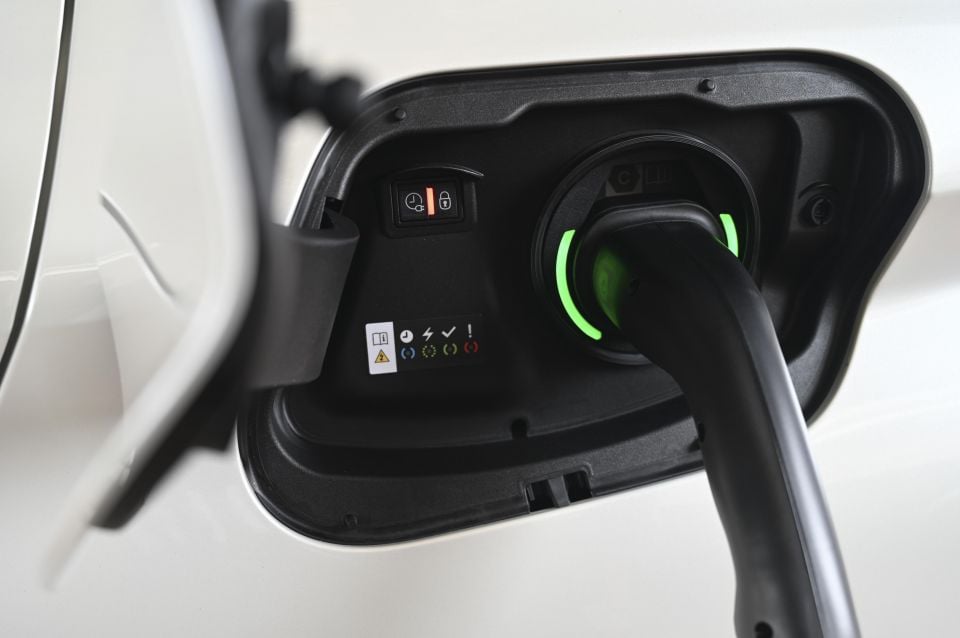
Considering the charging aspect, there is a maximum AC charging rate of 3.7kW. So, even if you have a 7kW wallbox at home like I do, you’ll be stuck with it only sucking down about half as much juice as it could.
Peugeot claims that the 12.4kWh lithium-ion battery will recharge from 0-100 per cent in approximately 3.5 hours from a wallbox, and approx 5.5 hours from a domestic household plug. You get a cable for that included with the car.
That also means you can’t plug it into a DC charger – the receiver plug on the car is a Mennekes plug (so, it’s got the round AC bit at the top but not the double-prong DC bit at the bottom).
I collected the car with a full battery, and it wouldn’t let me select EV mode when I left the compound. So I drove it the 60 kilometres back home, trying multiple times along the way for it to engage EV mode… it wouldn’t.
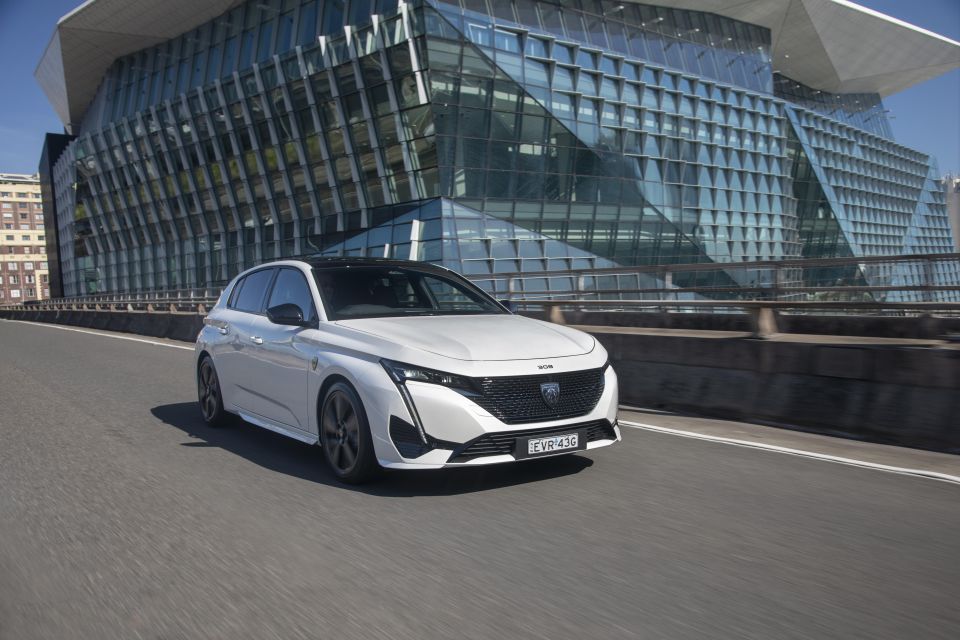
I figured it must be something to do with how it was run before I collected it. So I plugged it into my wallbox charger at home, and let it recharge overnight, hoping that by the next day, it would have figured out whatever it needed to.
Nope. It didn’t let me drive in EV mode then, either. So, as with day one, I tried deactivating the air-con, and just like day one it was a temperate day – low- to mid-twenties… Nothing.
By day three, which is when I was filming the car, I was concerned. I told the PR team at Peugeot about the problem, and they assured me that it would be investigated.
But what if I was a consumer who’d bought this vehicle on the premise that I’d be able to drive in EV mode when I wanted to? Like as I tried to, when I drove away from home towards town, and wanted to run on EV until it required me to run the petrol motor?

That didn’t happen though… until about three hours into my video production day, when it just suddenly allowed me to choose EV mode. And it stayed in that mode, unless I pushed too hard on the throttle, then it would call the petrol motor back into action.
Look, I understand some people will be okay with the car deciding what the most effective and efficient way of doing things is, and there will be some who will be fine with just driving in Hybrid mode, allowing the car to dip in and out of petrol or electric as it sees fit. Those people should just buy a Corolla Hybrid – seriously.
Am I wrong in thinking that the main reason plug-in hybrids are supposed to make sense is so that you can drive in EV mode when it’s best for you, and rely on a petrol engine if you need it?
If you see it differently, let me know in the comments.
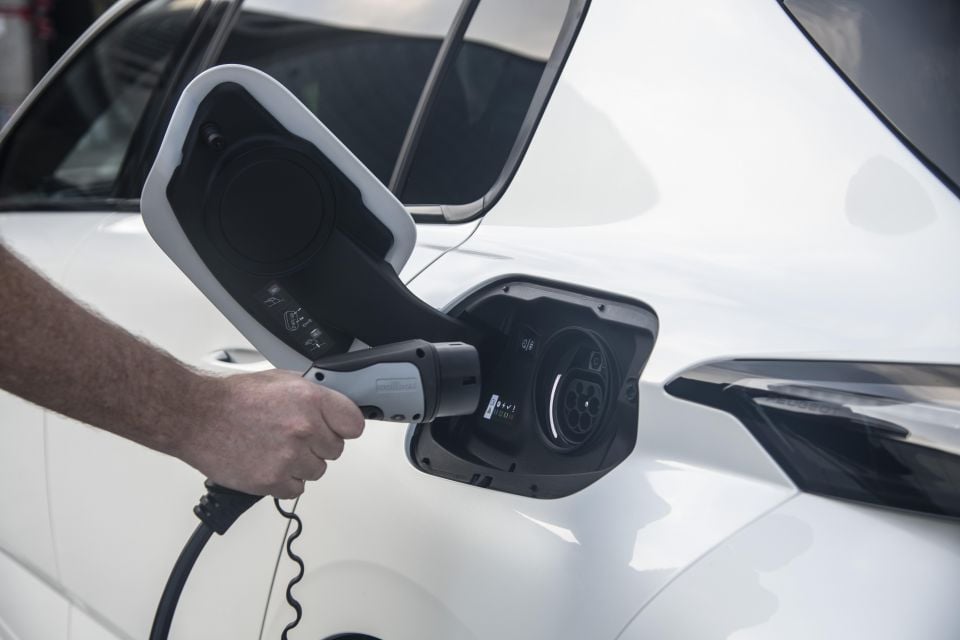
Where expert car reviews meet expert car buying – CarExpert gives you trusted advice, personalised service and real savings on your next new car.
I tried it again on the fourth day of driving, and yet again after a full recharge it wouldn’t let me select EV mode, even over a 60-kilometre trip back to the car compound which involved a mix of driving conditions.
It makes the technology seem extremely questionable, right? Especially when you’re being asked to pay between 32 and 47 per cent more to have it.
That’s a shame, because the 308 PHEV may otherwise prove a relatively liveable car to drive. It isn’t quite as charming as non-hybrid versions, which still have plenty of idiosyncrasies but also manage to have a slightly better air of general refinement.
In the PHEV, for instance, the switch over between petrol or battery mode can be a little gruff at times, and brake pedal feel is pretty badly executed compared to other modern-day hybrids.
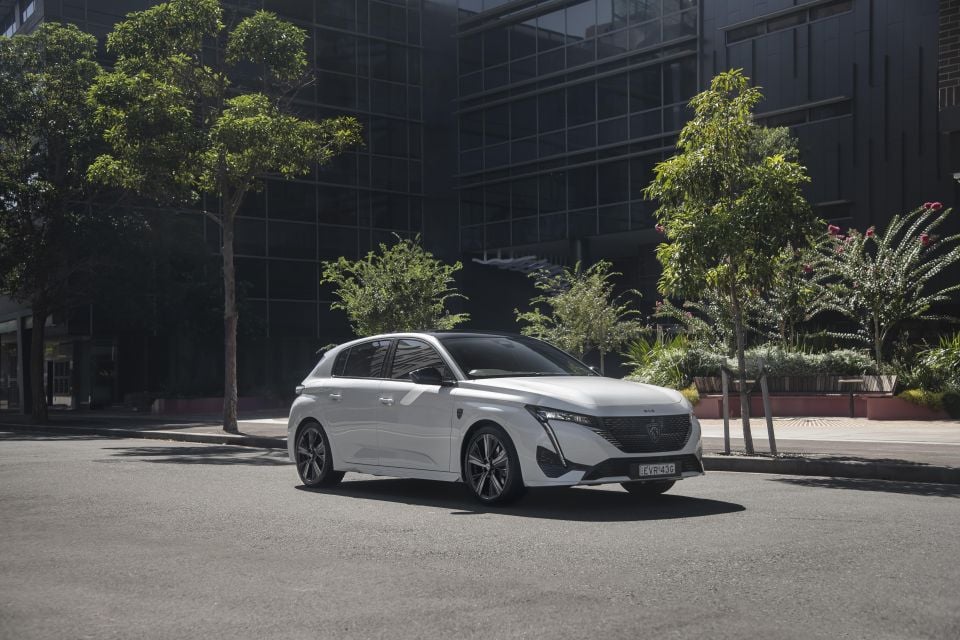
The steering is direct and because it’s a really quick action it feels pretty fun, especially with the tiny steering wheel.
The ride isn’t too bad – despite feeling a bit stiffer and less composed than the other 308 hatches – but I don’t think that’s this car’s biggest issue.
I guess that sums it up, in terms of the drive experience. The PHEV isn’t worth the money, so if you want a 308, buy one of the petrol ones.
The standard equipment list is pretty generous, as it’d want to be for a small hatchback at this price.



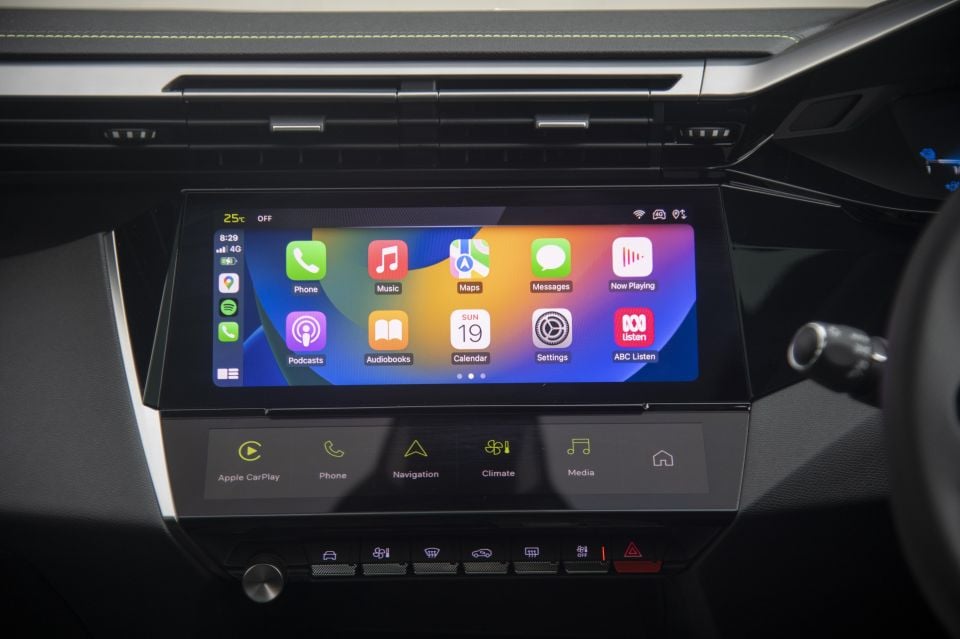
308 GT highlights:
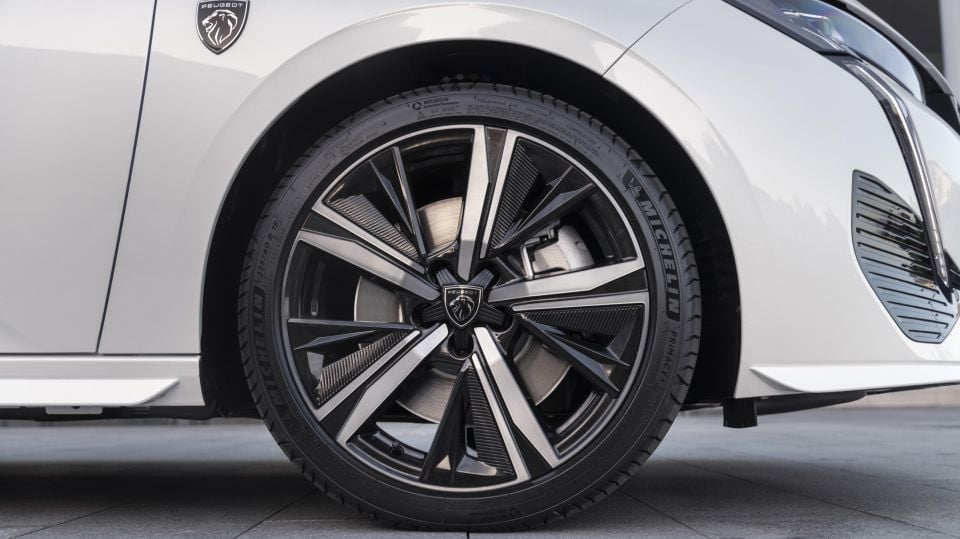

308 GT Premium adds:
308 GT Sport Plug-in Hybrid adds:
As you can see, there’s no mega step up from a gear perspective if you choose the PHEV model – only stuff that’s specific to the vehicle’s application. In other words, if you really don’t know if PHEV is right for you, pocket the cash and buy the petrol GT Premium.
It isn’t the safest small car you can buy – not based on Euro NCAP testing conducted in 2022, anyway.
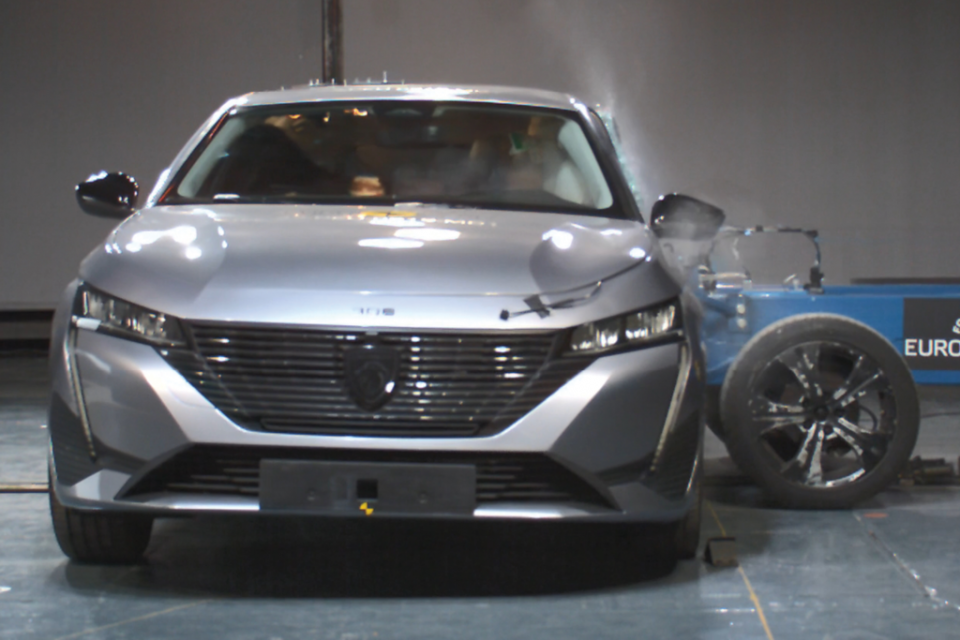
The 308 wears a four-star ANCAP and Euro NCAP safety rating, and part of the reason it didn’t fare as well as it could have is down to the adult occupant protection in a crash, which at 79 per cent, isn’t terrific.
Other scores included child occupant protection (86 per cent), vulnerable road user protection (68 per cent) and safety assist (82 per cent).
Standard safety features include:
308 GT Premium adds:
There’s a five-year, unlimited-kilometre warranty for the car, but the PHEV’s battery pack is covered by an eight-year/160,000km warranty – guaranteed to have 70 per cent capacity by the end of the warranty period.

Servicing is required every 12 months or 15,000km, whichever occurs first.
The brand offers a couple of relatively affordable servicing plans if you pay ahead – there’s a three-year plan at $1200, or five years at $2000. So, $400 a year for maintenance for a French hatch. Seems like the only affordable part of the deal.
The official combined cycle fuel consumption figure for the PHEV model is an impressive 1.3 litres per 100 kilometres. That might be achievable for the first hundred kays, but if you’re going on a big road trip, don’t expect it to stay that low.
That’s because the battery pack will deplete and you will have to call upon the petrol engine to do more of the work.

I did a couple of different test runs in the 308 during my time with it, as mentioned. And over the four days of driving, the average fuel consumption I saw was still a respectable 4.1 litres per 100km.
But that’s just the petrol consideration. It was using 19.4kWh/100km in terms of energy consumption.
You also have to remember if you don’t have solar (I don’t) you still get a little bill every time you charge it up – for me, the cost was about $3.80 for an empty-to-full recharge of the 12.4kWh battery.
In case it hasn’t been made clear in this review, the Peugeot 308 GT Sport Plug-in Hybrid is a decent car, but not a great PHEV.
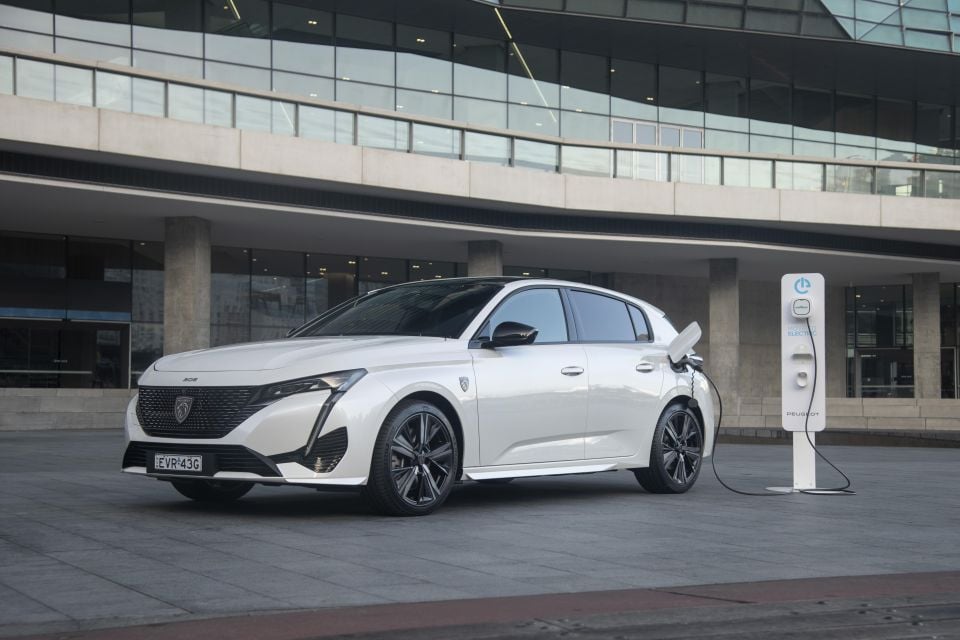
The constant and consistent issues with it overriding driver choices means it won’t be suitable for the job you probably want it to do, and that means it really doesn’t make all that much sense.
Click the images for the full gallery
MORE: Everything Peugeot 308
Where expert car reviews meet expert car buying – CarExpert gives you trusted advice, personalised service and real savings on your next new car.
Matt has more than a decade of experience in automotive journalism, and loves exploring the pros and cons of new cars, delving into deep-dive industry stories, and going for a drive just for the fun of it.


Damion Smy
27 Minutes Ago


Damion Smy
3 Hours Ago


Damion Smy
4 Hours Ago


Matt Robinson
7 Hours Ago


Damion Smy
7 Hours Ago


Damion Smy
21 Hours Ago